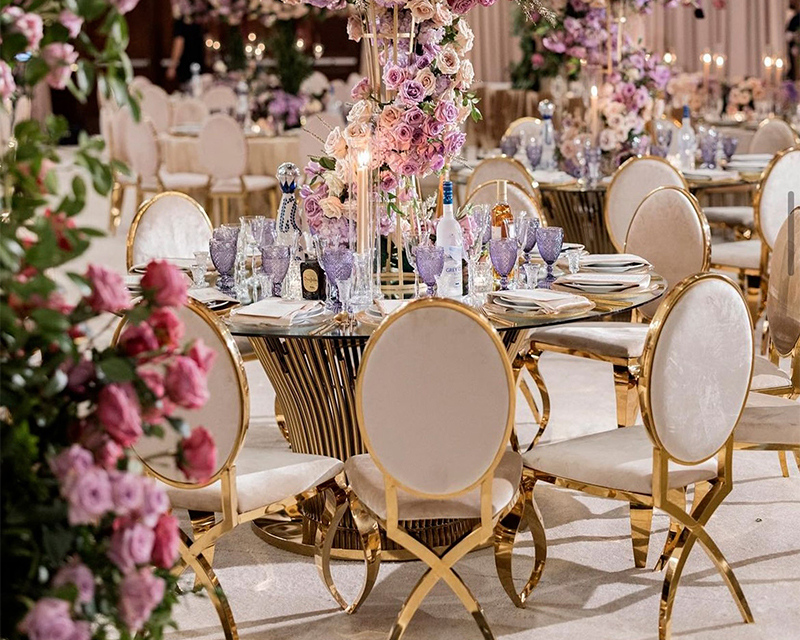Ilona Royce Smithkin, who as an orange-haired nonagenarian with matching two-inch eyelashes caught fireplace in the globe of vogue, starring in a documentary movie and joining manner campaigns for makes like Mentor, whilst flinging embers into many other fields as a muse for photographers, filmmakers and entertainers — a joyous persona that took a life span to build after a grim childhood — died on Aug. 1 at her property in Provincetown, Mass. She was 101.
The dying was verified by Melinda Levy, a longtime pal and a trustee of her estate.
Ms. Smithkin’s increase to fame began with a rumor.
In 2010, the photographer Ari Seth Cohen, who made Superior Fashion — a blog devoted to the type of women of all ages above 60 that afterwards turned a ebook collection and a motion picture on the same subject — heard from a good friend about a “magical girl with fiery red hair and the longest eyelashes everyone experienced ever witnessed.” He staked out a retailer she was explained to check out.
Not very long following, he spotted a lady on the road in the West Village of Manhattan who was about 4 toes 9 inches tall and wore hand-painted sneakers, matching newborn blue apparel and diamond-studded sun shades, with eyelashes poking out. It was her.
Mr. Cohen asked to acquire Ms. Smithkin’s photograph. She exclaimed, “Of system,” and kicked a leg in the air.
“I instantly fell in love,” Mr. Cohen explained in a cellular phone interview.
He commenced visiting Ms. Smithkin’s fourth-ground West Village wander-up, a very small studio so crammed with fabrics, handbags, paintings, publications and hats that the door could not totally open up. Ms. Smithkin served espresso or vodka — “the only two things I know how to make,” she spelled out — and explained how she fabricated her personal caftans and turned objects like letter organizers and typewriter springs into jewelry.
Without any intent to make a motion picture, Mr. Cohen and a close friend, Lina Plioplyte, began filming their discussions with Ms. Smithkin. That became, in 2014, a documentary, “Advanced Model,” targeted on some of the blog’s principal recurring characters.
In the motion picture, Ms. Smithkin, a painter by career, mixed arresting particular disclosures with slapstick comedy. “I came into my own about possibly 10, 12, 13 many years ago,” she stated, while she was 94 when it was released. She joined a nonagenarian mate, whom she claimed endured from memory loss, to sing as a duet “You Make Me Sense So Young.”
“I do not believe ‘Advanced Style’ would have been a fraction of what it is with no Ilona,” Mr. Cohen explained. “She brought it a depth. She was the star.”
Ms. Smithkin begun modeling, appearing in campaigns for eyewear by Karen Walker and apparel by Mara Hoffman She was labeled a “92-year-previous design and style legend” by The New York Post’s Website page Six, which described her dancing at the Jane Hotel in the West Village without the need of noticing that her scarf experienced caught hearth from a nearby candle. A further partygoer doused the flames with champagne.
To those boogieing at the Jane Resort, Ms. Smithkin might have appeared a determine from vaudeville, her flamboyant get-up amusing ample for a convert in the highlight. But she had a “stable of mentees,” consisting largely of artists, who understood better, explained 1 of them, the actor Erik Liberman.
“She found who was pulled in by the shade and light-weight, and who preferred to realize the resource of the color and light-weight,” Mr. Liberman mentioned. “For people who sought further discussion, off arrived the hats, the fantastic scarves and inevitably even the eyelashes.”
Mr. Liberman normally showed up at Ms. Smithkin’s studio at a moment’s notice to just take naps between Broadway performances. When, as an aspiring actor in his late 20s, he commenced paying time with Ms. Smithkin, he brought along notebooks to history what she stated. She instructed him to acquire his personal resourceful powers very seriously, fairly than look at performing as a variety of subservience to somebody else’s eyesight.
“That altered the overall system significantly of my young vocation,” Mr. Liberman stated.
Ms. Smithkin was born Ilona Rosenkranz on March 27, 1920. Her father, Mordko, was an engineer her mother, Frida (Lubinski) Rosenkranz, was a homemaker.
That information and facts arrives from immigration documents. In April 1938, the relatives moved from Berlin, where by Ilona experienced developed up, to New York. They mentioned their race as “Hebrew.”
As an grownup, Ms. Smithkin avoided discussing her background, saying when prompted that she experienced few recollections. But in a 2004 documentary about her, “Ilona, Upstairs,” she attributed the way her head shook at times involuntarily to ordeals she experienced as an 11-year-old when the Nazis started their increase to electricity.
“It’s not Alzheimer’s, it is not Parkinson’s,” she reported of her shaking. “That is that awful, repressed anxiety.”
In the United States, her dad and mom Anglicized their names to Max and Frieda, and the loved ones surname became Royce.
In accordance to Ilona’s early-1940s petition for naturalization as a citizen, she was born in Berlin, but she afterwards claimed that she had been born in Poland. She commenced creating art when she was about 5, and she researched at the Reimann School of Artwork and Design and style in Berlin, the Royal Academy of Good Arts in Antwerp, Belgium, and the Art Students League in New York.
A yr immediately after immigrating, when she was 19, Ilona married Irving Smithkin, a linotype operator. He died preventing in Earth War II and was buried in Italy.
Ms. Smithkin painted and built a living as a milliner, a manufacturing facility employee, a painter of glass lantern shades and a film theater usher. She moved into her West Village studio in 1947.
In the 1960s and ’70s, she commenced educating artwork courses in Kentucky and South Carolina, traveling to little towns and working with church basements and funeral parlors as classrooms. In 1975, she began holding painting classes on the South Carolina Educational Television Network.
When she was not on the road, Ms. Smithkin split her time concerning the West Village and Provincetown. She achieved and created portraits of writers like Tennessee Williams, Eugene O’Neill and Ayn Rand.
In interviews, Ms. Smithkin referred to getting a revelation and at last starting to be her authentic self all-around the age of 80, approximately the identical time she commenced accomplishing tracks by Marlene Dietrich and Édith Piaf in Provincetown and at New York venues like Joe’s Pub. She would use stilettos, stockings and a revealing gown, and until finally she had hip surgery in her mid-80s, she finished every single show by carrying out a break up.
By her own admission, she did not have significantly of a voice — but neither, she explained, did Dietrich.
Ms. Smithkin leaves no immediate survivors, but she did produce a ritual for marking someone as section of her interior circle.
You entered her studio and sat on a chair future to her bed. She analyzed your confront. She chosen a pencil. Then, for about 20 minutes, you held even now while she drew a portrait of one particular of your eyes.
“You communicate I want to listen to about you,” she would say when drawing, according to “Insomniac Metropolis,” a memoir by the photographer Bill Hayes in which he explained sitting for an eye portrait. “At this instant, you are the most essential particular person in the earth.”
It was, Mr. Liberman stated, a “spiritual encounter.”
“She grew preternaturally continue to, and her observance plumbed the depths of who you were being,” he extra. “She could evoke the entire cosmos of someone’s getting by the microcosm of their eye.”
Alain Delaquérière contributed analysis.




